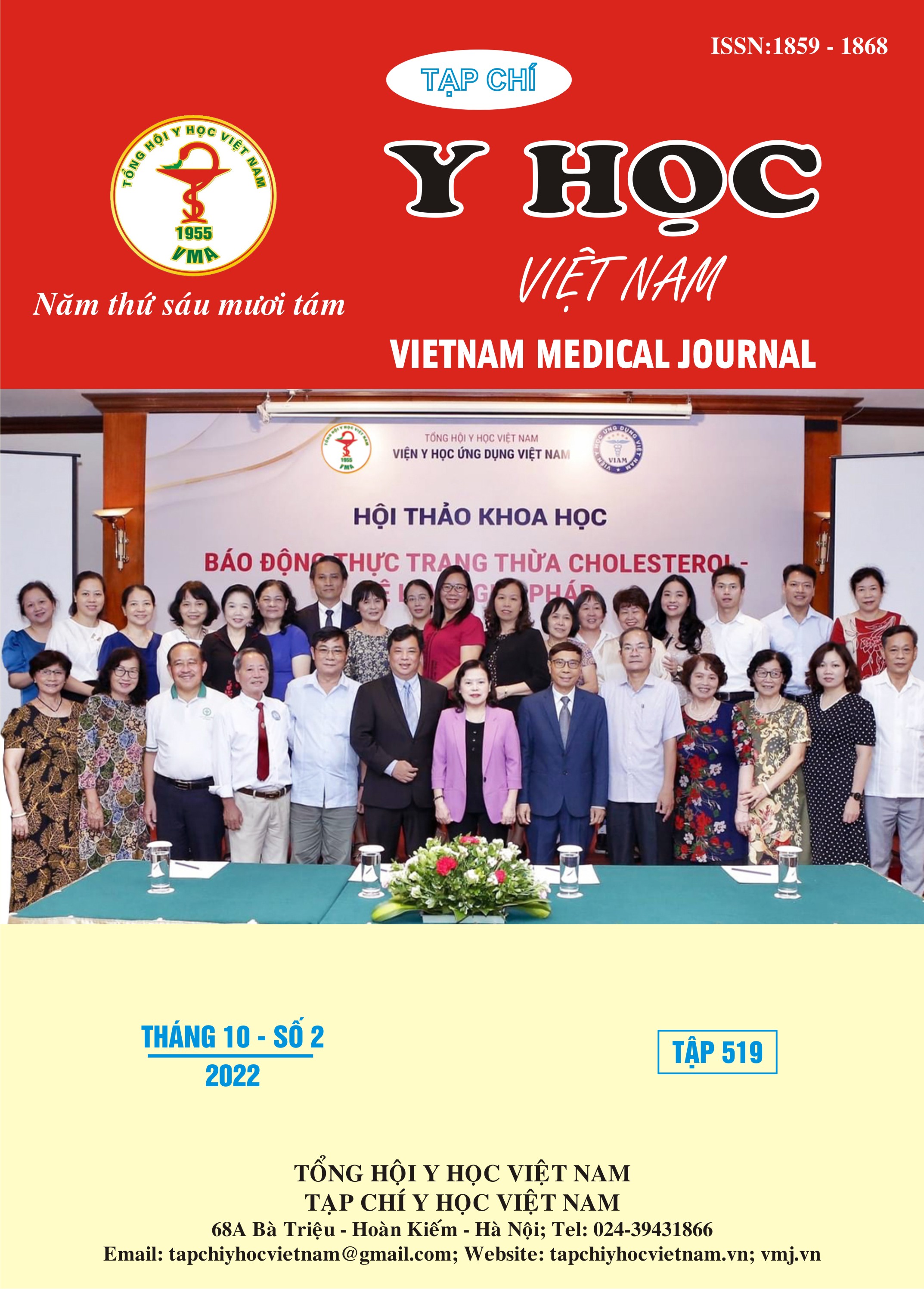COMPARATIVE EFFECTS OF MOTOR RECOVERY POST STROKE OF CHAM CUU CAI TIEN 2 TIMES/DAY WITH CHAM CUU CAI TIEN ONCE/DAY IN THE PROTOCOL OF CHAM CUU CAI TIEN + PHYSIOTHERAPY + BO DUONG HOAN NGU DECOCTION
Main Article Content
Abstract
Background: There have been many scientific publications on the effectiveness of motor recovery post stroke of Cham Cuu Cai Tien (CCCT), even in difficult cases. Objectives: This study was conducted to compare the effectiveness of motor function recovery and improvement of activities daily living (ADL) of hemiplegic patients post stroke in control group (CCCT once a day + physiotherapy + Bo Duong Hoan Ngu decoction) and intervention group (CCCT 2 times/ day + + physiotherapy + Bo Duong Hoan Ngu decoction). Materials and Methods: Study design: multicenter, randomized, controlled, clinical trial. Hemiplegic post stroke patients (after acute phase), with selected inclusion and no exclusion criteria were randomized into control and intervention group. All participants were monitored and evaluated 3 times (before, 10 days and 20 days after treatment). Outcome measures including the Fugl-Meyer Assessment (FMA), Barthel Index (BI), 9-Hole Test and 2-Minute Walk. The side-effects are also monitored simultaneously in daily treatment. Results: The motor function activity and dependence level in daily activities of hemiplegic patients in both control and intervention groups were improved significantly after treatment (p<0.05 and 0.001). However, the level of improvement in the intervention group showed better results than the control group (p< 0.001). BI with 36.97 points higher compared to 21.91; FMA-UE with 247% higher compared to 56.48%; FMA-LE with 97.35% higher compared to 66.15%; 9-hole test with 26.5% higher compared to 10.5%; 2-minute walk (with support) with 26.91 fold higher compared to 23.45 times after 20 days of treatment. The side-effects are little with very low frequency and similar in 2 groups. Conclusion: CCCT 2 times/ day in 20 days (in combination with physiotherapy and traditional medicine) is more effective in improving motor recovery and improving the level of dependence in activities of daily living than CCCT once/day.
Article Details
Keywords
Cham Cuu Cai Tien (CCCT), Barthel index, FMA, 9-hole test, 2-minute walk test, hemiplegic post stroke patients
References
2. Nguyễn Tử Siêu (biên dịch) (2009), Hoàng đế Nội Kinh – Huyết khí hình chí thiên, Nhà xuất bản Lao Động, tr. 197-199.
3. Nguyễn Văn Tùng và Phan Quan Chí Hiếu (2019), "Kết quả phục hồi vận động của phương pháp châm cứu cải tiến phối hợp vật lý trị liệu và thuốc bổ dương hoàn ngũ thang trên bệnh nhân tai biến mạch máu não đến trễ sau 3 tháng", Tạp chí Y học thành phố Hồ Chí Minh, 23(4), tr.221-228.
4. Phan Quan Chí Hiếu và cộng sự (2007), “Hiệu quả phục hồi liệt sau đột quỵ của phương pháp thể châm cải tiến”, Tạp chí Y học Thành phố Hồ Chí Minh, 11(2), tr. 26-34.
5. Phan Quan Chí Hiếu và Nguyễn Văn Tùng (2010), Hiệu quả phục hồi vận động của Châm cứu cải tiến trên bệnh nhân bị đột quỵ trước và sau 3 tháng, Luận văn thạc sỹ, Đại học Y dược thành phố Hồ Chí Minh.
6. Nguyễn Văn Nghĩa (dịch) Vương Thanh Nhậm (2013), Y lâm cải thác – Bàn về Bán thân bất toại, Nhà xuất bản lao động, tr. 77-84.
7. Bhogal S. K., Teasell R., and Speechley M. (2003), “Intensity of aphasia therapy, impact on recovery”, Stroke, 34(4), pp. 987-993.
8. Frost S. B., Barbay S., Friel K. M., Plautz E. J., & Nudo R. J. (2003), “Reorganization of remote cortical regions after ischemic brain injury: A potential substrate for stroke recovery”, J Neurophysiol, 89(6), pp. 3205-3214.
9. Hallett M. (2002), “Recent advances in stroke rehabilitation. Neurorehabil. Neural Repair”, 16(2), pp. 211-217.
10. Humprey S. M., Gardner G. A., & Raiszadeh R. (1994), “Loss of sensory, but not motor responsiveness in intact cortex surrounding a focal ischemic infarct in area 4.”, Society for Neuroscience Abstracts, 20, pp. 179.


